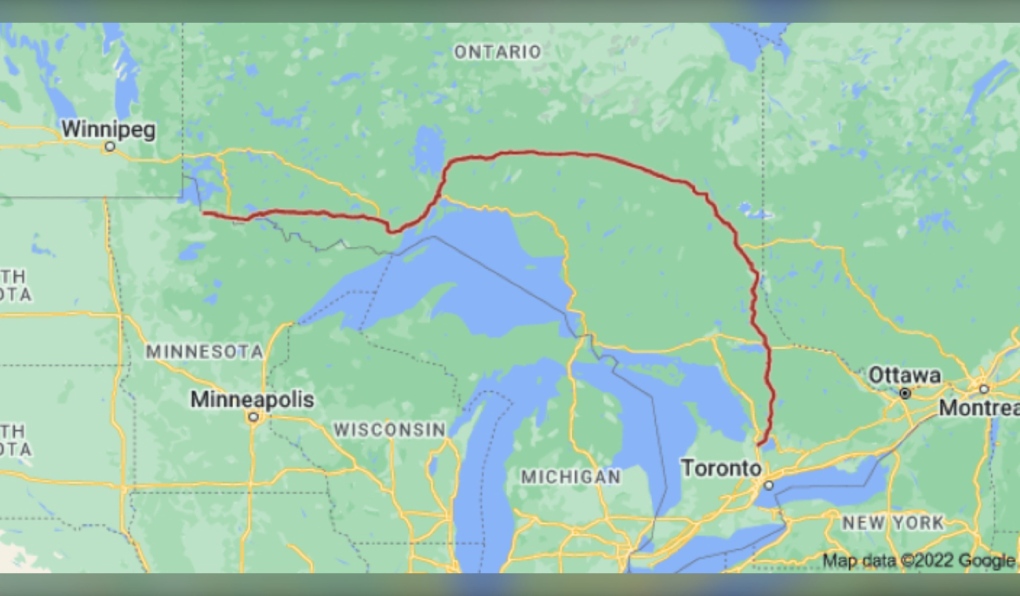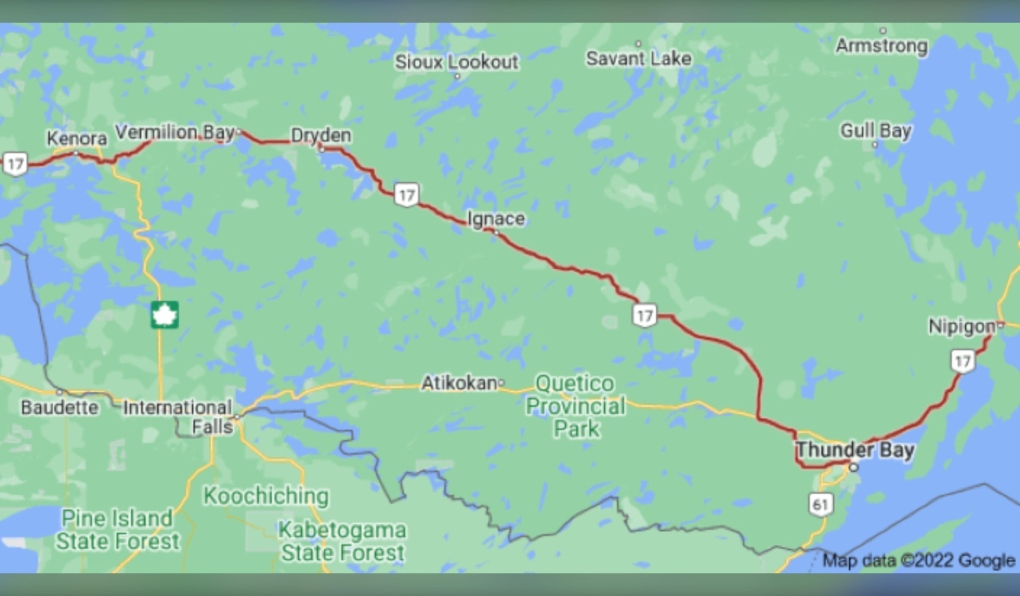Province creates new snow clearing standards for two northern highways
The province says it is improving road safety by clearing snow from two northern Ontario highways faster.
In a news release Friday, Ontario's Ministry of Transportation said Highways 11 and 17 will need to be fully cleared within 12 hours of a winter storm, four hours faster than the previous standard.
"Our government is the first to create a new highway level of service that will ensure Highways 11 and 17 are cleared faster, while improving road safety for drivers in the north," said Ontario Transportation Minister Caroline Mulroney, in the release.
The new standard followed a technical review of winter maintenance for the highways along with analysis from a winter maintenance pilot program over the last two years. The standard in Ontario for major highways with between 2,001 and 10,000 vehicles on average per day in the north, is 16 hours.
"Our government continues to ensure that Ontario is upholding the highest winter maintenance standards in North America. Clearing Highways 11 and 17 to bare pavement four hours faster following a winter storm will help keep Nipissing residents safe when they travel," said Ontario Minister of Economic Development, Job Creation and Trade and Nipissing MPP Victor Fedeli.
In addition to the new snow clearing standard, the province will also improve winter highway maintenance on these roadways with the use of more underbody plows, which will removing snowpack better than conventional plows, increased proactive use of anti-icing liquids before storms and enhancing 14 rest areas to provide safe places to stop during the winter season.
Mushkegowuk-James Bay MPP Guy Bourgouin, of the NDP, said the announcement should have gone farther to improve road safety standards on northern highways. He has tried twice to pass a private member’s bill that would classify both Highway 11 and 17 as Class 1 Highways, which comes with even higher standards including an eight-hour road clearing following a winter storm.
“We should be no different than the 400s and the QEW, eight hours. Yes, it means more investment but we deserve the same because … there are no other bypasses. It’s just these two highways, Highway 11 and 17. And when they’re closed, guess what? We’re shut down from the rest,“ said Bourgouin.
Highway 11 connects Barrie to Matheson, in northern Ontario, before turning west past Thunder Bay, towards the Manitoba border. Hwy 11 connects Barrie to Matheson, in northern Ontario. (Google Maps)Highway 17 connects Kenora, in northwestern Ontario to the Ottawa Valley passing through much of the northeast.
Hwy 11 connects Barrie to Matheson, in northern Ontario. (Google Maps)Highway 17 connects Kenora, in northwestern Ontario to the Ottawa Valley passing through much of the northeast. Highway 17 services Thunder Bay, Heart, Kapuskasing and North Bay by connecting them to Kenora in northwest and Ottawa Valley in the east. (Google Maps)Also in the name of safety, the province is building an additional 24 road weather information stations, 14 of which will be in northern Ontario, to respond to changing winter conditions more effectively.
Highway 17 services Thunder Bay, Heart, Kapuskasing and North Bay by connecting them to Kenora in northwest and Ottawa Valley in the east. (Google Maps)Also in the name of safety, the province is building an additional 24 road weather information stations, 14 of which will be in northern Ontario, to respond to changing winter conditions more effectively.
“We know that individuals across the north share the roads with mining and other resource development vehicles. It is especially important to keep these roads safe and clear during the harsh weather conditions in the north,” said Ontario Minister of Mines and Timmins MPP George Pirie.
“This is another step our government is taking to ensure families and workers stay safe this winter."
More information on how the province prioritizes clearing highways can be found here.
“It’s a significant commitment by the province to improve the safety standards on our highways, in the north,” added Pirie.
“Minister Mulroney, she’s spearheading this announcement. She’ll see that it gets done.”
The province also said it was moving ahead with North America's first-ever 2+1 highway pilot proposed for a portion of Highway 11 near Temiskaming Shores.
Article written with files from CTV Northern Ontario's Sergio Arangio.
CTVNews.ca Top Stories

W5 Investigates 'I never took part in beheadings': Canadian ISIS sniper has warning about future of terror group
An admitted Canadian ISIS sniper held in one of northeast Syria’s highest-security prisons has issued a stark warning about the potential resurgence of the terror group.
'Absolutely been a success': Responders looks back at 988, Canada's Suicide Crisis Helpline, one year later
In its first year, responders for Canada's Suicide Crisis Helpline, known as 988, have answered more than 300,000 calls and texts in communities nationwide.
Prime Minister Trudeau meets Donald Trump at Mar-a-Lago
Prime Minister Justin Trudeau landed in West Palm Beach, Fla., on Friday evening to meet with U.S.-president elect Donald Trump at Mar-a-Lago, sources confirm to CTV News.
Nova Scotia PC win linked to overall Liberal unpopularity: political scientist
Nova Scotia Premier Tim Houston is celebrating his second consecutive majority mandate after winning the 2024 provincial election with 43 seats, up from 34. According to political science professor Jeff MacLeod, it's not difficult to figure out what has happened to Liberals, not just in Nova Scotia but in other parts of Canada.
'Mayday! Mayday! Mayday!': Details emerge in Boeing 737 incident at Montreal airport
New details suggest that there were communication issues between the pilots of a charter flight and the control tower at Montreal's Mirabel airport when a Boeing 737 made an emergency landing on Wednesday.
Hit man offered $100,000 to kill Montreal crime reporter covering his trial
Political leaders and press freedom groups on Friday were left shell-shocked after Montreal news outlet La Presse revealed that a hit man had offered $100,000 to have one of its crime reporters assassinated.
Questrade lays off undisclosed number of employees
Questrade Financial Group Inc. says it has laid off an undisclosed number of employees to better fit its business strategy.
Cucumbers sold in Ontario, other provinces recalled over possible salmonella contamination
A U.S. company is recalling cucumbers sold in Ontario and other Canadian provinces due to possible salmonella contamination.
Billboard apologizes to Taylor Swift for video snafu
Billboard put together a video of some of Swift's achievements and used a clip from Kanye West's music video for the song 'Famous.'


































